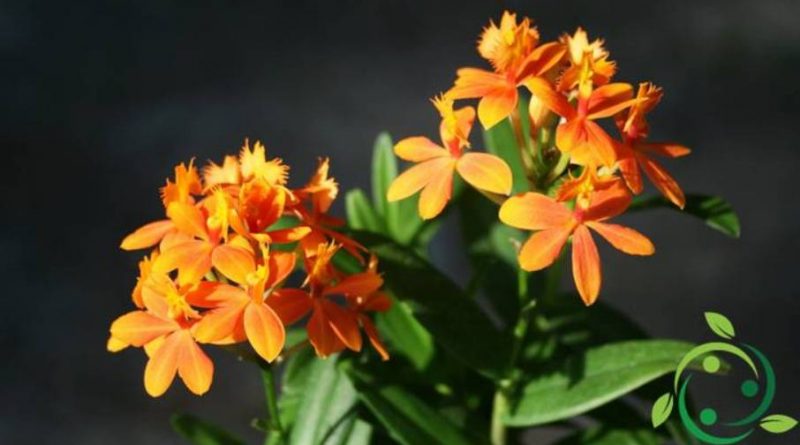How to grow Epidendrum
How to grow Epidendrum
The Epidendrum are a genus of plants (Epidendrum L., 1763) of the Orchidaceae family in which we find around 1,000 species.
It is a very different genus where the various species can take on different sizes: small, very high (up to 3 meters in height), with large pseudo-bulbs or with thin and long stems like reeds.
The Epidendrum are also very suitable for crossbreeding with similar genera (especially with Cattleya) and are among the most beautiful species ever in the plant world.
Among the cultivated species we recall:
– Epidendrum aromaticum – plant native to Mexico and has very fragrant white-yellow flowers that develop in pendulous racemes;
– Epidendrum atropurpureum – a species native to Central America, it has pseudo-bulbs with two leaves, the flowers have a reddish-colored peduncle, the labellum is white with red-violet spots;
– Epidendrum brassavolae – a species native to Guatemala, with long pseudo-ovaloid bulbs that have two leaves, and erect flowers of yellow-green color and the labellum can be red or white;
– Epidendrum falcatum – also originating from Mexico, with very short pseudo-bulbs and falcate, pendulous and rigid leaves; it has white-green flowers and the large white three-lobed labellum has a narrow central lobe while the lateral lobes are broad and winged;
– Epidendrum medusae – plant native to Ecuador with pendulous stems that at the apex show florid-green-yellow with purple fringed labellum;
– Epidendrum vitellinum – native to Mexico, with oval-shaped pseudo-bulbs and two leaves which at the apex have red flowers with a yellow-orange labellum.
In this card we see how to cultivate the Epidendrum taking into account the pedological and climatic needs.
Let’s start with the substrate. This should consist mainly of universal soil, lightened with pieces of sphagnum and pieces of bark, a composition that helps keep the substratum moist and fresh.
As for the brightness, it is necessary to choose very bright positions but not in direct contact with the sun’s rays. In winter they should be grown at home or in greenhouses but to encourage flowering, it is advisable to guarantee the plants a period of vegetative rest, with temperatures below 15 ° C.
For this reason, in winter the plants should be placed in a place sheltered from the cold, in a bright position and in an unheated area of the house, with maximum temperatures below 15 ° C.
Once in the period that goes from the hottest spring to the summer, the plants must be moved outdoors, taking care to always position them where the sun’s rays do not reach them.
However, varieties with long and thin barrels like canes require a higher temperature.
Let’s look at water supplies.
Let’s say that in general these plants do not need excessive watering and it is sufficient to keep the soil fresh and just damp. During the cooler months water can be added every 8-10 days while during the warmer months the distance between one watering and the other must be reduced, always taking care to avoid any stagnation.
An emphasis on water quality, which is true for virtually all orchids. This must have a very low salinity, with low limestone content, so if you are not in the presence of water with these characteristics you can use a mixture of your water with deionized water, increasing the percentage of deionized water as much as the water in the network water or other source is loaded with salts.
As far as the irrigation method is concerned, the best method is by immersion which consists in taking a bowl in which to place the vase with the orchid and filling it with water up to the outer edge of the vase; at this point the pot must be left in immersion until the bark on the surface of the pot has absorbed the water, let it drain well and reposition the pot in its place; in this way we will have the substratum well moistened without the water stagnating in the saucer.
Within the water availability for the Epidendrum the total water must be counted, that is also that coming from the humidity of the air.
To increase the amount of water in the air it is important to vaporize the plants, passably when they are not in bloom, and with demineralized water, so as not to stain the limestone leaves; if our house is very dry, in addition to vaporizing the plants we can equip ourselves with a cold humidifier, to be placed in the room where we keep the plants, or we can place our flats in large saucers, on the bottom of which we will constantly keep the clay and some centimeter of water that evaporating will increase the humidity of the air.
Let’s move on to fertilizing: this operation must be carried out from the beginning of spring, until we notice the first floral buds; you need to provide fertilizer for orchids every 10-12 days. When the Epidendrum begins to bloom, we need to stop fertilizing. These orchids have the particularity of flowering even for many months, because once the flowers are wilted, new ones are produced at the apex of the stem; to keep the plant beautiful and healthy, we periodically remove the withered flowers, with the help of a small sharp scissor.
Finally the technique of multiplication. This can happen either by division of the roots or by cutting.

